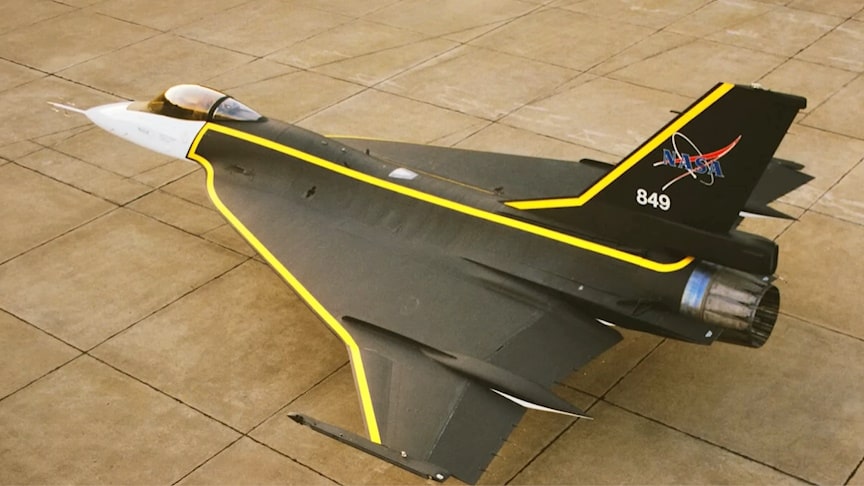The General Dynamics F-16XL is a derivative of the F-16 Fighting Falcon with a cranked-arrow delta wing. It entered the United States Air Force’s Enhanced Tactical Fighter competition in 1981 but lost to the F-15E Strike Eagle. The two prototypes were shelved until being turned over to NASA for additional aeronautical research in 1988. Both aircraft were fully retired in 2009 and stored at Edwards Air Force Base.
source.image: Found And Explained
The wing and rear horizontal control surfaces of the base F-16A were replaced with a cranked-arrow delta wing 115% larger than the original wing. Extensive use of graphite-bismaleimide composites allowed the savings of 270 kg of weight, but the F-16XL-1 and XL-2 were 1,900 kg and 5,600 2,500 kg heavier respectively than the original F-16A.
Less noticeable is that the fuselage was lengthened by 140 cm by the addition of two sections at the joints of the main fuselage sub-assemblies. With the new wing design, the tail section had to be canted up 3.16°,and the ventral fins removed, to prevent them from striking the pavement during takeoff and landing.
Advertisement
These changes resulted in a 25% improvement in lift-to-drag ratio in supersonic flight while remaining comparable in subsonic flight, and a plane that reportedly handled smoothly at high speeds and low altitudes. The enlargements increased internal fuel capacity by 1,970 kg, or about 65%.Powerplant: 1 × General Electric F110-GE-100 turbofan, 17,100 lbf (76 kN) thrust dry, 28,900 lbf (129 kN) with afterburner. Performance. Maximum speed: 1,350 mph.











